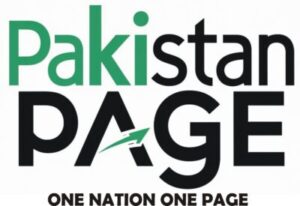ISLAMABAD:The recent, heart-wrenching tragedy in which a family from Sialkot was swept away by the raging waters of the Swat River during what was meant to be a peaceful summer outing has reignited concerns about tourist safety in northern Pakistan. Just weeks earlier, four friends from Gujrat—Wasif Shahzad, Umar Ehsan, Salman Nasrullah Sandhu, and Usman—met a similar fate when their white Honda Civic plunged into a ravine near Astak Nallah on May 16. Their excited posts from Hunza quickly turned into silence, and the wreckage was discovered only on May 24, ending eight days of agonizing hope for their families.
These tragic incidents highlight a grim and growing pattern on the mountain highways of northern Pakistan. In Gilgit-Baltistan alone, Rescue 1122 and local police report nearly 1,500 road accidents annually on high-risk routes like Gilgit–Skardu, Jaglot–Skardu, and the Karakoram Highway. Each summer, these roads claim dozens of lives, underscoring the dangerous gap between tourism promotion and infrastructure safety.
Pakistan’s northern regions—known for their awe-inspiring landscapes and adventure tourism appeal—were projected to contribute as much as $16 billion in tourism value by 2022, with potential to double by 2033. But the deadly incidents in Swat and Gilgit reveal how scenic beauty can mask life-threatening vulnerabilities: crumbling and narrow roads without protective barriers, long mobile network dead zones, and under-equipped rescue services that often arrive too late.
If Pakistan is to realize its tourism ambitions, especially in the North, immediate reforms are essential. Road safety infrastructure must be improved with proper signage, seasonal access regulations, and pre-season safety audits. Telecommunication providers must be incentivized to establish temporary coverage along major tourist corridors. Emergency response systems such as Rescue 1122 need permanent bases, helicopter landing facilities, and rapid-response teams near major destinations. In parallel, tourists should be briefed on safety protocols, vehicles should be inspected for suitability, and risky routes should require permits to ensure only capable drivers proceed.
The memories of the Swat family and the four young men from Gujrat should not be forgotten. Their loss must serve as a wake-up call for policymakers, telecom providers, emergency planners, and the tourism industry to act collectively and decisively. Northern Pakistan deserves to be celebrated for its beauty—not feared for its dangers.
Although international tourism revenue in Pakistan stood at just $1.3 billion in 2023—compared to $77 billion to $215 billion in top global destinations—its domestic travel market generated over $22 billion, contributing around 5.8% to the national GDP and supporting nearly 4.7 million jobs. The untapped potential of Pakistan’s North is immense. With targeted investment in infrastructure, accessibility, and hospitality, regions like Gilgit-Baltistan, Hunza, Swat, and Kaghan could attract 500,000 to 1 million foreign visitors annually, potentially adding up to $1 billion in new revenue.
Strengthening infrastructure in the North is not just an economic imperative—it is a moral responsibility. Only by transforming these tragedies into proactive safety measures can Pakistan protect its citizens, uplift its economy, and fulfill the true promise of northern tourism.

